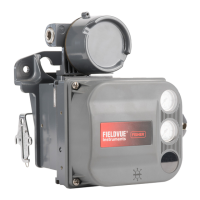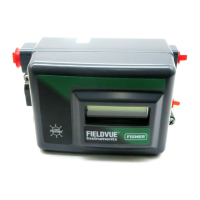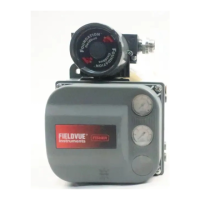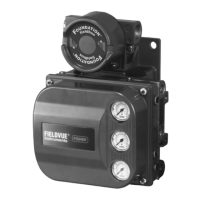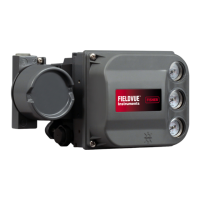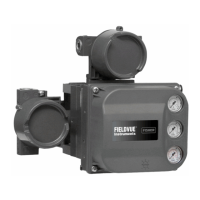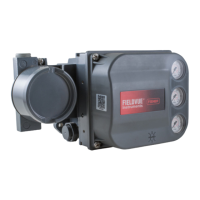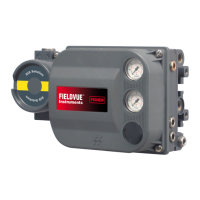Instruction Manual
D102748X012
DLC3010 Digital Level Controller
Service Tools
May 2018
75
Compensated Torque Rate is the torque rate adjusted for process temperature by table data.
Note
At firmware 8 the table is not applied dynamically, so Compensated Torque Rate = Torque Rate.
Upper Fluid Density is adjusted for process temperature by user-entered table (SG). Upper Fluid Density is not used
when PV is Liquid Level; it represents density of upper process fluid when PV is Interface Level.
Lower Fluid Density is adjusted for process temperature by user-entered table (SG). Lower Fluid Density represents
the difference between densities of lower and upper process fluids when PV is Liquid Level; it represents Density of
Lower Fluid when PV is Interface Level.
D The Signal Tracing menu can help isolate configuration issues by using variable help and/or the signal block diagram
(provided in hosts that can present images), to work through the math.
Constants
Zero Reference Angle is the lever angle used as a reference point in PV calculation (deg). It represents the lowest
measurable process condition when PV is Liquid Level; it represents the dry displacer condition when PV is Interface
Level or Liquid Density.
Note
If the driver rod is on the lower travel stop at dry condition, use Liquid Level as the PV and the difference between densities of lower
and upper process fluids for Lower Fluid Density.
Driver Rod Length is the recorded driver length (in).
Mechanical Gain is the mechanical gain of the sensor (lbf/deg).
= CompensatedTorqueRate / DriverRod
Displacer Weight is the recorded weight (lb).
Dry Deflection is the theoretical torque tube deflection from zero load for dry displacer (deg).
= DisplacerWeight * DriverRod / CompensatedTorqueRate
Displacer Volume is the recorded volume (in
3
).
Reference Buoyancy is the theoretical buoyant force (lb) generated when the displacer is completely covered with
water (SG = 1)
= DisplacerVolume * ReferenceDensity
Displacer Length is the recorded length (in).
Level Offset is the Primary Variable value you want the instrument to report when physical level is at the bottom of
displacer. Unless you want the digital range to start at the vessel zero reference or the process set point, use zero for
this value. Level Offset is available only in Level or Interface mode. It is read-only in display and may be edited in the
'Set Level Offset' menu item.
Signals are dynamic values of intermediate calculations in the PV signal path.
Sensor Rotation is the measurement of the pilot shaft rotation, referenced to the neutral (locked) position of the
lever assembly, (deg).
